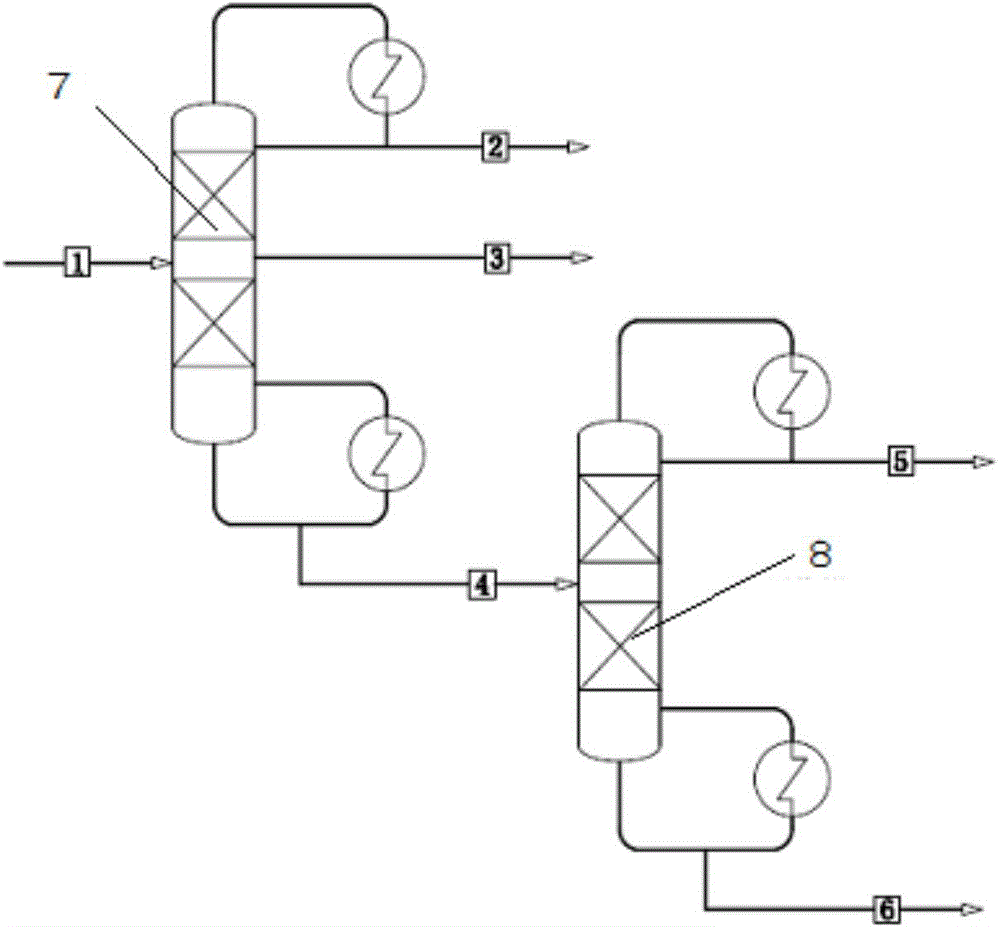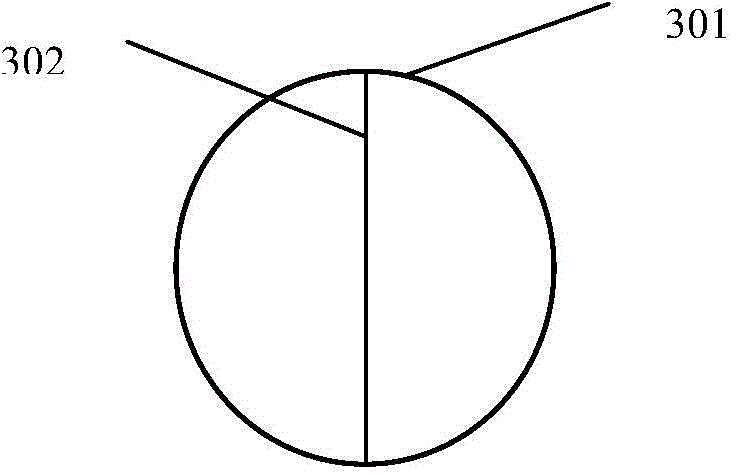Mono-ethylene glycol purification and recovery method
A monoethylene glycol and polyethylene glycol technology, applied in chemical instruments and methods, preparation of organic compounds, organic chemistry, etc., can solve the problems of complex separation process, low separation purity, and large investment.
- Summary
- Abstract
- Description
- Claims
- Application Information
AI Technical Summary
Problems solved by technology
Method used
Image
Examples
Embodiment 1
[0043] use figure 2 The flow shown is based on the 500,000 tons / year ethylene glycol plant, and the materials whose weight percentage composition is shown in Table 1 are separated. The dividing wall rectification column (packed column) adopted has 55 theoretical plates, 15 theoretical plates are respectively arranged on both sides of the dividing plate in the dividing wall section, and there are 10 theoretical plates in the stripping section under the dividing plate, and the operating pressure is 5.73 at the top of the tower. Absolute pressure in kilopascals, reflux ratio is 13 by weight; at the 25th block tray feeding, rectification section side line extraction position is the 8th theoretical plate counted downward from the top of the tower, and the extraction position of the partition wall section side line is from The 33rd theoretical plate is counted downward from the top of the tower.
[0044] For comparison, the operating conditions and separation results are listed in...
Embodiment 2
[0051] According to the conditions described in Example 1, the total number of theoretical plates, the number of theoretical plates on both sides of the partition and the reflux ratio of the dividing wall rectification column were changed. The dividing wall type rectifying tower (packed tower) that adopts has 60 theoretical plates, respectively has 20 theoretical plates on both sides of the dividing plate of the dividing wall, and the stripping section under the dividing plate has 10 theoretical plates, and the reflux ratio is calculated as 15.
[0052] For comparison, the operating conditions and separation results are listed in Table 11.
[0053] The detailed component separation effect of the corresponding dividing wall rectification column is shown in Table 7, and the energy consumption is shown in Table 8.
[0054] Table 7 Detailed table of separation results of dividing wall distillation column
[0055]
[0056] Table 8 Energy consumption analysis table for the proc...
Embodiment 3
[0059] According to the conditions described in Example 1, the total number of theoretical plates, the number of theoretical plates on both sides of the partition and the reflux ratio of the dividing wall rectification column were changed. The dividing wall rectifying column (packed tower) that adopts has 50 theoretical plates, respectively has 13 theoretical plates on both sides of the dividing plate of the dividing wall, and the stripping section under the dividing plate has 7 theoretical plates, and the reflux ratio is calculated as 14.
[0060] For comparison, the operating conditions and separation results are listed in Table 11.
[0061] The detailed component separation effect of the corresponding dividing wall rectification column is shown in Table 9, and the energy consumption is shown in Table 10.
[0062] Table 9 Detailed table of separation results of dividing wall distillation column
[0063]
[0064] Table 10 Energy consumption analysis table for the process...
PUM
 Login to View More
Login to View More Abstract
Description
Claims
Application Information
 Login to View More
Login to View More - R&D
- Intellectual Property
- Life Sciences
- Materials
- Tech Scout
- Unparalleled Data Quality
- Higher Quality Content
- 60% Fewer Hallucinations
Browse by: Latest US Patents, China's latest patents, Technical Efficacy Thesaurus, Application Domain, Technology Topic, Popular Technical Reports.
© 2025 PatSnap. All rights reserved.Legal|Privacy policy|Modern Slavery Act Transparency Statement|Sitemap|About US| Contact US: help@patsnap.com



